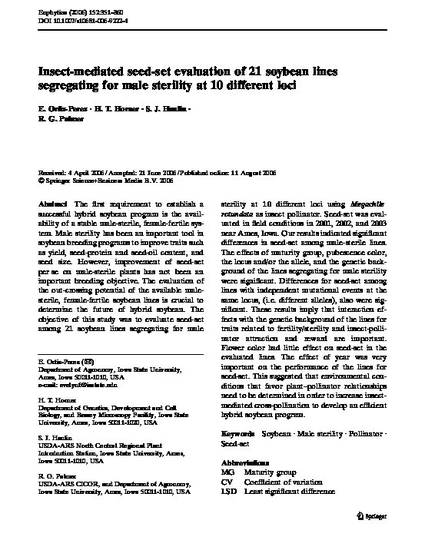
The first requirement to establish a successful hybrid soybean program is the availability of a stable male-sterile, female-fertile system. Male sterility has been an important tool in soybean breeding programs to improve traits such as yield, seed-protein and seed-oil content, and seed size. However, improvement of seed-set per se on male-sterile plants has not been an important breeding objective. The evaluation of the out-crossing potential of the available male-sterile, female-fertile soybean lines is crucial to determine the future of hybrid soybean. The objective of this study was to evaluate seed-set among 21 soybean lines segregating for male sterility at 10 different loci usingMegachile rotundata as insect pollinator. Seed-set was evaluated in field conditions in 2001, 2002, and 2003 near Ames, Iowa. Our results indicated significant differences in seed-set among male-sterile lines. The effects of maturity group, pubescence color, the locus and/or the allele, and the genetic background of the lines segregating for male sterility were significant. Differences for seed-set among lines with independent mutational events at the same locus, (i.e. different alleles), also were significant. These results imply that interaction effects with the genetic background of the lines for traits related to fertility/sterility and insect-pollinator attraction and reward are important. Flower color had little effect on seed-set in the evaluated lines. The effect of year was very important on the performance of the lines for seed-set. This suggested that environmental conditions that favor plant–pollinator relationships need to be determined in order to increase insect-mediated cross-pollination to develop an efficient hybrid soybean program.
Available at: http://works.bepress.com/harry-horner/32/

This article is from Euphytica 152 (2006); 351, doi: 10.1007/s10681-006-9222-4.